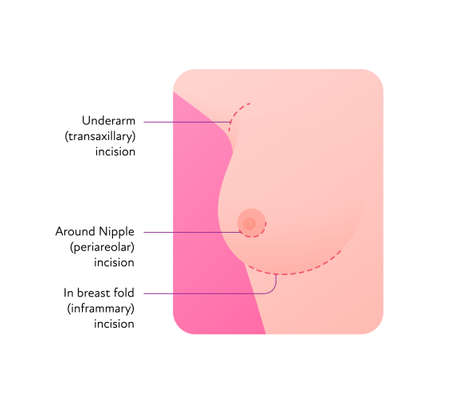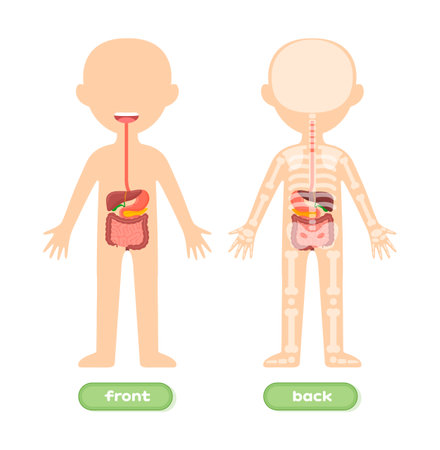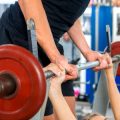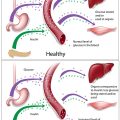Overview of Achilles Tendon Repair and Rehabilitation Needs
The Achilles tendon is the largest and strongest tendon in the human body, connecting the calf muscles to the heel bone. Despite its strength, it is also one of the most frequently injured tendons, especially among active adults and athletes in the United States. Every year, thousands of Americans experience Achilles tendon ruptures, often during activities that involve sudden acceleration or jumping, such as basketball, soccer, and running.
Recent studies estimate that the incidence of Achilles tendon ruptures in the U.S. ranges from 5 to 10 per 100,000 people annually, with higher rates among men aged 30 to 50. As more people participate in recreational sports and fitness routines, these numbers continue to rise.
Why Surgical Repair Is Often Needed
Many Achilles tendon tears require surgical repair to restore strength and function, especially for active individuals aiming to return to their previous level of activity. Surgery involves stitching the torn ends of the tendon back together. While surgical techniques have improved over time, recovery can be challenging without a well-designed rehabilitation plan.
The Role of Physical Therapy After Achilles Tendon Repair
Rehabilitation after surgery is crucial for a successful outcome. The main goals are to:
- Protect the healing tendon
- Restore range of motion
- Regain muscle strength
- Return safely to daily activities and sports
A tailored rehabilitation program based on evidence-based guidelines can make a significant difference in recovery time and overall results.
Prevalence and Rehabilitation Needs at a Glance
| Aspect | Description |
|---|---|
| Incidence in U.S. | 5–10 per 100,000/year (higher in active adults) |
| Common Causes | Sports injuries, sudden movements, falls |
| Main Treatment Options | Surgical repair followed by physical therapy |
| Key Rehab Goals | Tendon protection, mobility restoration, strength building, safe return to activity |
| Cultural Considerations | High demand for early return to work/sports in American culture |
Importance of Individualized Rehabilitation Plans
No two patients are exactly alike. Age, activity level, occupation, and personal goals all influence how rehab programs should be designed. Evidence-based physical therapy interventions help ensure each patient receives care that meets their unique needs while supporting optimal recovery after Achilles tendon repair.
Principles of Evidence-Based Physical Therapy
When it comes to recovery after an Achilles tendon repair, following evidence-based physical therapy is key. This means that therapists don’t just rely on tradition or personal preference—they use a combination of the latest research, their own clinical experience, and what matters most to the patient. Let’s break down what this really means for your rehab journey.
What Is Evidence-Based Practice?
Evidence-based practice (EBP) is all about making decisions that are supported by reliable evidence. In physical therapy, especially after surgeries like Achilles tendon repair, this approach helps ensure you’re getting the safest and most effective care possible. EBP brings together three main components:
| Component | Description |
|---|---|
| Best Available Research | Using up-to-date scientific studies and guidelines to guide treatment choices |
| Clinical Expertise | Your therapist’s hands-on knowledge and experience in treating Achilles injuries |
| Patient Values & Preferences | Your goals, concerns, lifestyle, and what you hope to achieve from therapy |
How These Principles Apply After Achilles Tendon Repair
Your recovery plan should be unique—no two patients are exactly alike. An evidence-based therapist will first review the latest research on safe movement timelines, strengthening strategies, and ways to avoid re-injury. Then they’ll use their experience to tailor these findings to your specific case. Just as importantly, your preferences matter too. Maybe you want to get back to running, or maybe walking pain-free is your main goal. By working together and communicating openly with your therapist, you become an active part of the decision-making process.
Why It Matters
The principles of evidence-based physical therapy help you avoid outdated practices and focus on treatments proven to work. This results in better outcomes, fewer complications, and higher satisfaction during your rehabilitation after Achilles tendon repair.

3. Acute Postoperative Interventions
Early-Phase Rehabilitation Strategies
The first few weeks after Achilles tendon repair are critical for healing and setting the stage for a successful recovery. Physical therapists in the United States follow evidence-based protocols to guide patients through this acute phase, focusing on protecting the tendon while gently encouraging movement.
Protected Weight-Bearing
Most surgeons and therapists recommend protected weight-bearing right after surgery. This often means using crutches or a walker, along with a walking boot that keeps your foot in a safe position. The goal is to avoid putting too much stress on the healing tendon while still promoting circulation and preventing stiffness.
| Weeks After Surgery | Weight-Bearing Status | Assistive Device |
|---|---|---|
| 0-2 Weeks | No weight (non-weight bearing) | Crutches or walker, boot/cast |
| 2-6 Weeks | Partial weight (as tolerated) | Crutches/walker, boot with heel lifts |
| 6+ Weeks | Gradual progression to full weight | Boot, then transition to shoe with heel lift |
Pain Management Techniques
Pain and swelling are common during the early days after surgery. Therapists use several evidence-based strategies to help manage discomfort:
- Ice therapy: Applying ice packs to reduce swelling and pain.
- Elevation: Keeping your leg elevated above heart level to decrease swelling.
- Compression: Using wraps or compression stockings as recommended by your care team.
- Pain medications: Following your doctors advice on over-the-counter or prescribed pain relievers.
Range of Motion Exercises
Gentle movement is encouraged early on, as long as it is safe and approved by your surgeon. The main focus is on maintaining mobility in surrounding joints without stressing the repaired tendon. Some typical early exercises include:
- Ankle pumps: Moving your foot up and down within the boot (if allowed).
- Toe curls: Gently curling and spreading your toes.
- Knee range of motion: Bending and straightening your knee while keeping your foot protected.
- No active ankle stretching: Avoiding any forced dorsiflexion (pulling toes up) until cleared by your healthcare provider.
Key Points for Success in the Acute Phase
- Follow all weight-bearing restrictions closely to protect the tendon repair.
- Communicate regularly with your physical therapist about pain levels, swelling, or any concerns.
- Start gentle exercises only as advised by your care team; don’t rush the process.
- Your therapist will adjust your program based on healing progress and current evidence-based guidelines.
4. Progressive Strengthening and Functional Training
Gradual Progression to Strengthening
After an Achilles tendon repair, rebuilding strength is essential for a safe and successful return to daily activities and sports. In the United States, where walking, running, and active lifestyles are highly valued, a structured strengthening program is crucial. Start with low-resistance exercises and gradually progress to more challenging movements as healing advances.
| Phase | Example Exercises | Frequency |
|---|---|---|
| Early Phase (Weeks 4-8) | Isometric calf contractions, seated heel raises | 1-2 sets of 10 reps, 1-2 times/day |
| Middle Phase (Weeks 8-12) | Standing heel raises, resistance band exercises | 2-3 sets of 10-15 reps, 3 times/week |
| Late Phase (After Week 12) | Single-leg heel raises, step-ups, bodyweight squats | 3 sets of 15-20 reps, 3-4 times/week |
Proprioceptive Training for Everyday Activities
The ability to balance and sense joint position—called proprioception—is often affected after surgery. Proprioceptive exercises help reduce the risk of future injuries and prepare you for typical American activities like hiking, playing recreational sports, or simply navigating uneven sidewalks.
- Balance Board Drills: Stand on a wobble board or BOSU ball for 30 seconds at a time.
- Single-Leg Stance: Stand on your recovering leg while brushing your teeth or cooking.
- Lateral Movements: Practice gentle side steps or grapevine walking in a safe area.
Return-to-Activity Protocols for Active Lifestyles
A goal-oriented approach helps meet the expectations of Americans who enjoy participating in sports or staying active with family and friends. Your physical therapist will guide you through a personalized plan based on your goals.
| Goal | Recommended Activities | Timeline* |
|---|---|---|
| Walking Without Limping | Treadmill walking, outdoor walks on flat surfaces | 8-10 weeks post-surgery |
| Returning to Running/Jogging | Jog-walk intervals, agility ladder drills | 16-24 weeks post-surgery |
| Recreational Sports (Basketball, Tennis) | Plyometrics, sport-specific drills with gradual intensity increase | 6+ months post-surgery |
*Timelines may vary based on individual recovery; always consult your physical therapist before progressing to higher-impact activities.
5. Outcome Measures and Return-to-Play Considerations
Functional Outcome Assessment Tools
Tracking progress after Achilles tendon repair is crucial for both patients and physical therapists. In the United States, several evidence-based tools are commonly used to measure recovery, monitor function, and make decisions about returning to sports or work. These tools help ensure the rehabilitation process is effective and tailored to individual needs.
| Assessment Tool | Description | Common Use |
|---|---|---|
| Single Leg Heel Raise Test | Counts how many times a patient can rise onto their toes on the affected leg without losing balance or form. | Measures calf strength and endurance. |
| Achilles Tendon Total Rupture Score (ATRS) | A patient-reported questionnaire evaluating symptoms and physical activity limitations related to the Achilles tendon. | Tracks subjective recovery over time. |
| Hop Tests (e.g., Single-Leg Hop for Distance) | Evaluates dynamic strength, power, and confidence by measuring how far the patient can hop on one leg. | Assesses readiness for high-impact activities. |
| Range of Motion (ROM) Measurement | Compares dorsiflexion and plantarflexion between both ankles using a goniometer. | Ensures symmetry and joint mobility. |
| Lower Extremity Functional Scale (LEFS) | A questionnaire that assesses difficulty with everyday activities involving the legs. | Monitors functional improvement in daily life. |
Criteria for Return-to-Sport or Work
The decision to return to sports or physically demanding jobs should be based on objective measures rather than just time since surgery. In the U.S., physical therapists use a combination of functional tests, strength benchmarks, and patient-reported outcomes to guide these decisions. Returning too early can risk re-injury, so meeting established criteria is essential for long-term success.
Main Criteria for Return-to-Play:
- Pain-Free Activity: The patient should perform sport-specific or job-related movements without pain or swelling.
- Strength Symmetry: Calf strength should be at least 90% compared to the uninjured side, as measured by heel raises or dynamometry.
- Functional Test Performance: Ability to complete hop tests, agility drills, or work-simulated tasks at 85-90% of pre-injury level.
- Full Range of Motion: Ankle flexibility should match the non-injured side within a few degrees.
- No Compensatory Movements: Gait and movement patterns must be normal during walking, running, or climbing stairs.
- Patient Confidence: The individual feels ready and confident to resume demanding activities, supported by high scores on patient-reported outcome tools like ATRS or LEFS.
Sample Return-to-Play Checklist Table:
| Return-to-Play Criterion | Status (Yes/No) |
|---|---|
| Pain-free during all relevant activities | |
| Cuff strength ≥ 90% of opposite side (heel raise repetitions) | |
| Full ankle ROM (within 5° of other ankle) | |
| No swelling after exercise/training session | |
| Able to complete single-leg hop at ≥ 85% distance of uninjured leg | |
| No limp or compensatory movement patterns observed | |
| Patient-reported confidence in return (high ATRS/LEFS score) |
Key Takeaways for Patients and Therapists:
- Select assessment tools that are meaningful and relevant to your goals—whether it’s getting back on the basketball court or returning to construction work.
- Your physical therapist will guide you through specific tests and checklists to make sure you’re truly ready before taking on higher-level activities again.
This approach ensures a safe return and reduces the risk of setbacks as you get back to doing what you love or need to do every day.


